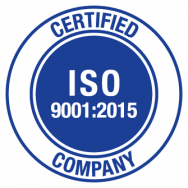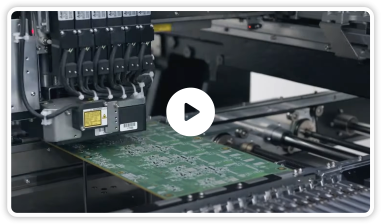The PCB or printed circuit board waste we have been generating for decades is harming our environment. The discarded materials these boards contain
consist of many hazardous substances including lead, cadmium, mercury, and
other chemicals that affect life on Earth adversely. Rush PCB Inc. has taken an environmentally responsible step by manufacturing RoHS-compliant PCBs across all products.
RoHS and WEEE
RoHS or Restriction of Hazardous Substances is a directive that restricts the
use of several hazardous materials, especially those used by electrical and
electronic components. Initially, the restrictions were on six hazardous
substances. Two upgrades to the RoHS directive have added four additional
elements to this list.
Along with RoHS, WEEE is another legislation that impacts the electronic
industry. WEEE or Waste Electrical and Electronic Equipment makes
manufacturers responsible for the disposal of their finished goods at the end
of their life.
According to the RoHS directive, it is illegal for manufacturers to produce
electrical or electronic equipment that contains restricted materials harmful to the environment. Specifically, electrical and electronic equipment must not
contain more than 1000 ppm of:
- Lead
- Mercury
- Cadmium
- Hexavalent Chromium
- PBB or Polybrominated Biphenyls
- PBDE or Polybrominated Diphenyl Ethers such as Penta PBDE and Octa PBDE
- DEHP or Bis(2-ethylhexyl)-phthalate
- BBP Butyl Benzyl Phthalate
- DBP Dibutyl Phthalate
- DIBP or Di-Isobutyl Phthalate
Lead-Free PCB Manufacturing
Earlier, PCB manufacturers used lead extensively for surface finish and
soldering. As per the RoHS directive, manufacturers cannot use lead as it is a hazardous substance. This led to the development of lead-free PCB
manufacturing. Now, manufacturers use solder that is free from lead for the
assembly of PCBs. However, as the lead-free soldering process requires a
higher temperature to solder, the materials forming the PCB must withstand
this higher temperature without damage. This requires new laminates that
possess better thermo-mechanical properties to withstand higher temperatures of lead-free soldering, both for improving their infant mortality rates and long-term stability.
Although PCB manufacturers use flame retardants in laminates, and these are
not on the restricted list, lead-free initiatives affect the supply chain for flame
retardants as well.
Cost of RoHS Implementation
When considering environmental protection and the future of living beings,
cost should not be an issue. However, there is a commercial aspect of RoHS
implementation that must be understood.
Lead-free solder typically costs at least 20% higher than leaded solder. Apart
from this material cost, there is a rise in energy cost, as lead-free soldering
requires a higher reflow soldering temperature. An additional cost is incurred in training personnel to change over to a lead-free environment.
Some lead-free materials include the cost of patent licensing. Furthermore,
lead-free materials require gallium, indium, silver, and bismuth, and these are expensive to refine.
Reliability
Removing lead and changing over to other materials for lead-free
manufacturing requires extensive reliability testing. Refinements are necessary for reliability testing models, criteria, and techniques to match the material properties of lead-free assemblies. These include:
High-Temperature Soldering
Soldering at higher temperatures, as required for lead-free soldering, can
reduce the useful life of components, introduce thermal fatigue, cause IC plastic deformation , generate popcorn effects, delaminate multi-layer boards, and more.
Solder Joints
Typically, the long-term reliability of lead-free solder joints is less than that of
leaded-solder joints.
Tin Whiskers
Many component manufacturers use pure tin to replace the lead finish, thereby minimizing costs. However, this leads to whisker formation, causing shorts in the PCB, a very serious problem.
Solder Flux
As temperatures in leaded solder processes are low, compatible solder flux
used in these processes cannot withstand high temperatures. If the operator
uses the same solder flux for lead-free solder processes, it will decompose,
oxidize, and evaporate before fluxing can take place. Therefore, lead-free
solder requires a different type of solder flux that can withstand the higher
temperatures in the process.
RoHS Affects Material Selection
PCB manufacturers must select base materials that conform to the RoHS
directives. Simultaneously, they must also ensure that the chosen base
materials result in long-term stability of the PCB. Therefore, they must
consider the following key properties of the base material while selecting:
Tg or Glass Transition Temperature
Glass transition is the temperature at which a polymer changes from a glassy rigid
state to a soft and easily deformable state. Exceeding the glass transition
temperature changes several properties, and this includes the rate at which
the material expands with increasing temperature.
For instance, mid-Tg FR4 material, with its higher glass transition temperature, is better suited for lead-free assembly as compared to traditional material.
Td or Decomposition Temperature
Decomposition typically leads to loss of mass. Decomposition temperature is
one at which the material loses 5% of its original mass. Therefore, the PCB
material can start decomposing during lead-free soldering, as the peak
temperatures are typically high and may reach onset points of decomposition.
CTE or Coefficient of Thermal Expansion
CTE values for resin systems above Tg are far higher than those below it.
Expansion of material in the Z-axis typically induces stress on plated vias. For
lead-free assembly, as the temperatures are higher, the overall expansion of
the material is also higher, resulting in higher stress on plated vias. Therefore,
manufacturers incorporate CTE-reducing inorganic fillers for lead-free
materials. For component and layer interfaces, X- and Y-axis CTEs are also
important.
Moisture Absorption
PCB material can absorb moisture, which turns into vapor at higher
temperatures. During lead-free assembly, the high temperatures can lead to absorbed moisture forming high vapor pressure, causing voiding or
delamination. PCB assemblies may initially pass lead-free assembly testing,
and after storage in uncontrolled environments, they may absorb moisture, resulting in defects.
Time to Delaminate
This is the time for PCB material to start delaminating once it has crossed the
decomposition temperature. It is related to the adhesion between components of the material. Delamination is also dependent on moisture absorption and thermal expansion. Furthermore, in multilayer boards, other factors like the treatment of the internal copper surfaces are also important.
RoHS and Flame Retardants
Flame retardants typically reduce the concentration of heat and the generation of toxic gases, while delaying or eliminating flashovers. Directives like RoHS and WEEE also affect the selection of flame retardants that manufacturers use with the resin system. For instance, RoHS directives prohibit the use of specific types of brominated flame retardants.
Component Solderability
To provide solderability and improve the shelf life, most component
manufacturers use some type of plating on their component leads, which is
typically close to what PCB manufacturers use on the soldering pads of their
boards. Typically, the process control for component plating may be more
important than that for PCBs. Manufacturers use various plating methods,
depending on the speed of plating and the number of components they must
plate per hour, including various plating techniques and alloys.
RoHS Compliance of Flex Circuits
There are two main material selection concerns for flex circuits, concerning
RoHS compliance. One is that the material must be flame retardant, and
the other is that it must be heat-resistant due to high-temperature processing with lead-free soldering. In addition, flexible applications require adhesive-based copper laminates.
Why RoHS-Compliant PCBs?
The major concern is piles of electronic waste in open junkyards all over the
globe. There is no control over the hazardous substances like heavy metals
and other chemicals that electronic waste typically contains. The problem is
exaggerated as acidic rainwater dissolves these harmful substances and
contaminates groundwater and water bodies. Ultimately, this severely harms
aquatic life and human wellbeing.
RoHS initiatives provide the requisite relief for all. Compliance with RoHS
directives will ultimately support the fight against global warming and climate change.
Ensuring Compliance with RoHS Directives
According to the RoHS directives, the manufacturer must provide a certificate
of compliance. However, it does not specify the method used for this purpose.
For instance, instruments for X-ray fluorescence measurements are adequate
for checking materials. While the instrument is capable of material analysis, it
is also capable of measuring coating thickness. The two tests are important
ones concerning RoHS/WEEE regulations. They are non-destructive, fast, and simple methods for estimating elemental concentration in materials.
RoHS Compliant PCBs
With people using more electronic products, their presence in the open
junkyard is also rising once their useful life has ended. Furthermore, most of
these products are sent for trash reclamation, a process that pollutes our landfills. Lead-free or RoHS-compliant PCBs are increasingly in demand, as they do not contain hazardous chemicals and substances, and hence, are environmentally friendly.
We offer several RoHS-compatible plating finishes on our PCBs. These include:
- IS or Immersion Silver
- ENIG or Electroless Nickel Immersion Gold
- OSP or Organic Solderability Preservative
- IT or Immersion Tin
- Soft Bondable Gold
- Full-body Gold Finishes
As per the RoHS directives, we use lead-free substrate materials, solder
masks, inks, surface finishes, and other chemicals during manufacturing. In
addition, as manufacturers and assembly service providers, we ensure that
solder joints, heat sinks, and discrete components are RoHS compliant.
Contact Us
Rush PCB Inc. is fully equipped for delivering Lead-free or RoHS-compliant PCB assemblies to any customer. Our world-class manufacturing setup in the USA has sophisticated machines for manufacturing lead-free and RoHS-compliant PCB assemblies.
Our manufacturing setup is capable of handling all electronic PCB assemblies, including flex and rigid-flex PCBs, in high-mix and low volumes.









